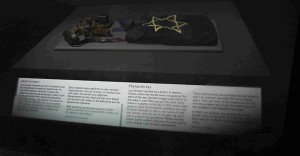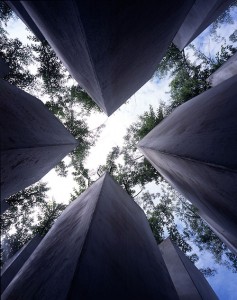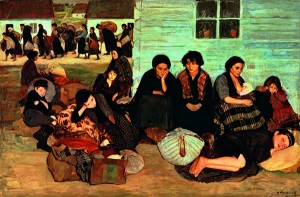It’s not only Jewish history in Germany that continually surprises us with its complexity: the visitors to the Jewish Museum can also be as unexpected as they are diverse. During my tours through the permanent and temporary exhibitions, I have had remarkable encounters. This year among the most unusual was with a group of theologians from the city of Qom, who came to experience the museum at the beginning of October. Most Iranian preachers and imams graduate from the theological seminary at Qom, not far from the capital Tehran and considered, in contrast to the liberal Najaf for instance, a bastion of conservative learning. → continue reading
A Visit from Iran
On Omission
“Axis of the Holocaust” is the designation of one of three corridors in the museum’s basement. Display cabinets are inlayed in the wall. They contain photographs, pieces of writing, and objects that convey the stories of people who survived or were murdered in the Holocaust.
They contain photographs, pieces of writing, and objects that convey the stories of people who survived or were murdered in the Holocaust.
In one window lie phylacteries and a pouch with an embroidered Star of David. These objects belonged to Leo Scheuer. He gave them to the museum shortly before his death. → continue reading
Bezalel’s Progeny
50 Jewish Artist You Should Know presents the lives and work of the most important Jewish painters, sculptors, and visual artists of the past two hundred years, as selected by the author Edward van Voolen,
curator at the Joods Historisch Museum, Amsterdam, as well as rabbi and teacher at the Abraham Geiger Kolleg, Potsdam. The book is a joy to read. The concise introduction sketches the history of Jewish art of the past three thousand years, describing major events and personalities – Bezalel, the first biblical artist, and his successors –, but avoiding the pitfall of seeking too much common ground among the artists based solely on their Jewish family backgrounds.

